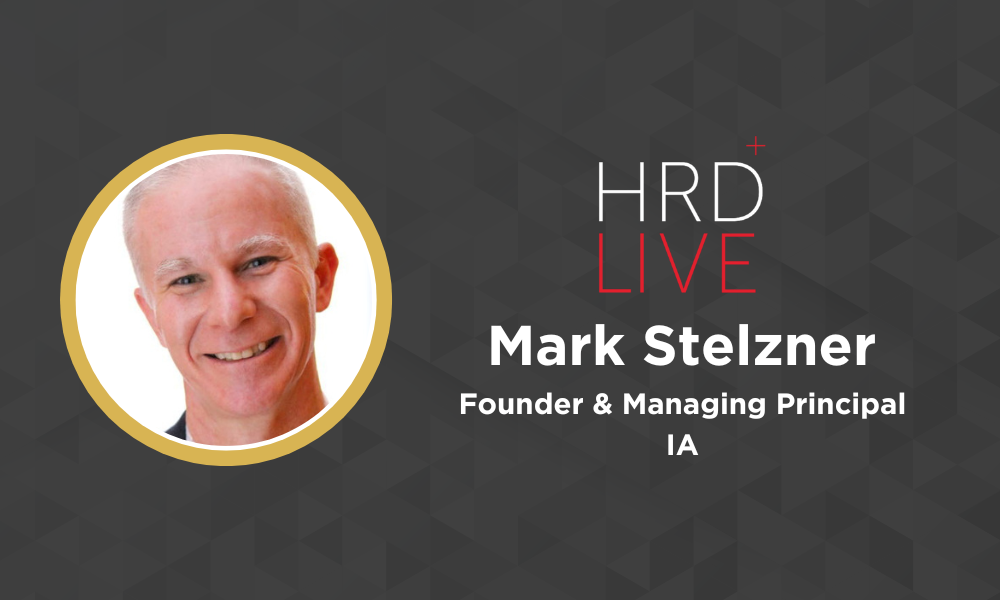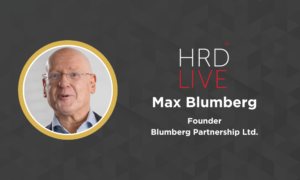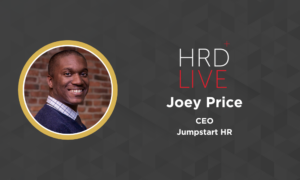Mark Stelzner: Deconstructing HR data to drive real-time change
- 5 Min Read
“I’m not a fan of measurement for measurement’s sake. We have more data in HR than we ever have in the history of this function. So, it’s not an issue of access. It’s an issue of viability and actionable outcomes.”
- Author: Benjamin Broomfield
- Date published: Apr 5, 2023
- Categories

Podcast: Play in new window | Download
Subscribe: RSS
Think about the most recent data insight that gave you a clearer picture of your people, your organization, or how your HR policies are performing. Do you know if the insight is a ‘lagging’ or a ‘leading’ indicator? Or, in other words, do you know if it is indicating the outcome of an event, or foreshadowing a potential outcome to follow? Knowing the difference, and working with both types of indicators, is vital to moving your data insights from informative to actionable.
Mark Stelzner, Founder at IA, presents the lagging and leading indicator concept on the latest HRD Live podcast episode. This approach ensures insights are actionable by driving rigorous and conscious attention. This helps HR teams to improve any business outcome that data may be supporting, from turnover to employee mental health.
Are your data insights lagging or leading?
Step-by-step deconstruction of data insights is the only way to truly understand what your data is telling you, and what actions you need to take. The first of these steps is determining whether each insight is lagging or leading. Stelzner offers two small analogies to explain each.
“A leading indicator is often a less precise preview or contributory element of something to come. Think of it as the proverbial canary in the coal mine, signaling potential actions or outcomes that may or may not correlate to a downstream KPI. It’s going to give us a preview, potentially, of what those outcomes might be.”
“A lagging indicator is the ability to look in our rear view mirror. Looking back, we often have the benefit of much more correlation or causation associated with it. But unfortunately, it’s after the fact.”
Marrying lagging and leading indicators
Once you have determined whether your insight is a lagging or leading indicator, you understand what is missing from your picture. Stelzner offers a real-world example of a large global manufacturer with around 60,000 employees in almost 90 different countries. This manufacturer has a lagging indicator of high regrettable turnover in the first year of around 40% to 50%.
“It’s very concerning with the cost of recruiting the cost of onboarding, induction training, and productivity for their employees. But the premise in which they attack this project is that they have an onboarding problem.”
“The hypothesis is that the leading indicator is issues associated with one’s induction into the organization.”
With each data insight, consider the leading indicator that your lagging indicator may be referencing. From there, Stelzner argues you can begin to peel back the layers even further.
“Maybe it’s something to do with the job descriptions and the promises that we’re making to our talents. So, what are the activities that one goes through from top to bottom, from the first moment that one becomes aware of the position all the way through the application process, the recruiting, the qualification, the background checks, the drug screening, the pre-boarding, the onboarding, the induction, and the training.”
Quickly, from the lagging indicator of high regrettable turnover, we now have a leading indicator that can separate into a huge map of potential action areas.
Informative to actionable data insights
The next step on the path to actionable data insights is measurement. Far too many people functions are measuring for measurement’s sake, particularly within diversity, equity, inclusion, and belonging. To move from curious or fascinating insights into action, we need to care about what we are measuring, and whether we can trust what we are measuring is accurate.
Stelzner argues we must deconstruct the mechanics of measurement to understand what is impacting the timeliness, accuracy, and veracity of data – whether it is a meaningless metric, or an actionable metric.
“I’m not a fan of measurement for measurement’s sake. We have more data in HR than we ever have in the history of this function. So, it’s not an issue of access. It’s an issue of viability and actionable outcomes.”
“It starts with hyper transparency. As we move into the C-Suite, or the leadership functions of these organizations, where data is primarily a decision driver, one of the problems is our confidence level. What confidence level do we have in the data? Or where do we have opportunities for improvement?”
He also highlights the need for timeliness in an ever-changing business landscape.
“We must bring situational awareness to how the data has been gathered and how aged the data is. Again, is it a lagging indicator that represents what happened 90 days ago? Or is it what happened 90 minutes ago? How close to real-time can we take action? The timeliness of these interventions and executive insights will determine how much we can empower real-time change in our managers.”
Timestamps
00:17 – Introduction
00:59 – You’ve talked about people or data analytics as either a ‘lagging’ or ‘leading’ indicator. What do you mean by those terms?
01:53 – What steps can HR leaders take to spot when an indicator is lagging and leading?
06:09 – How can HR leaders move from informative insights to actionable insights?
10:46 – What steps can HR leaders take to act, and empower managers to act, on the right insights?
15:13 – Can you share any other major pitfalls when it comes to leveraging data-driven insights?
19:21 – How can people analytics and data-driven insights help solve challenges in the long term?








